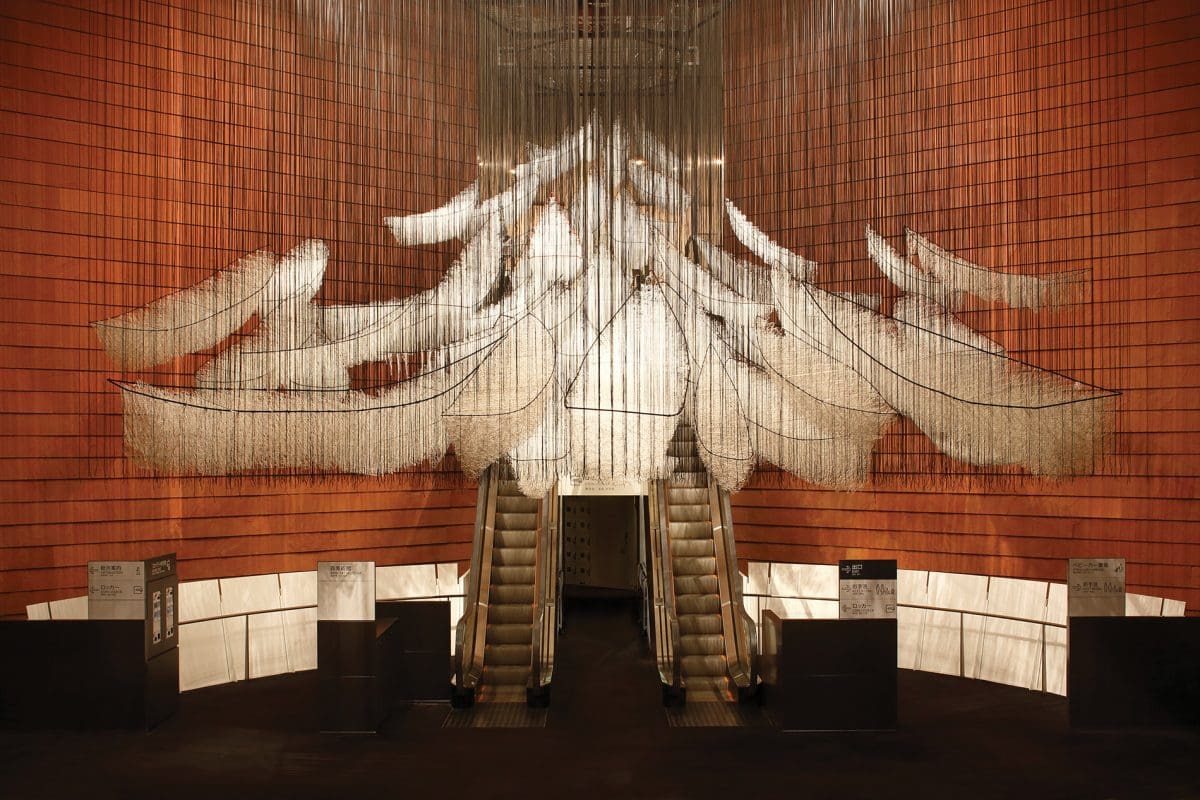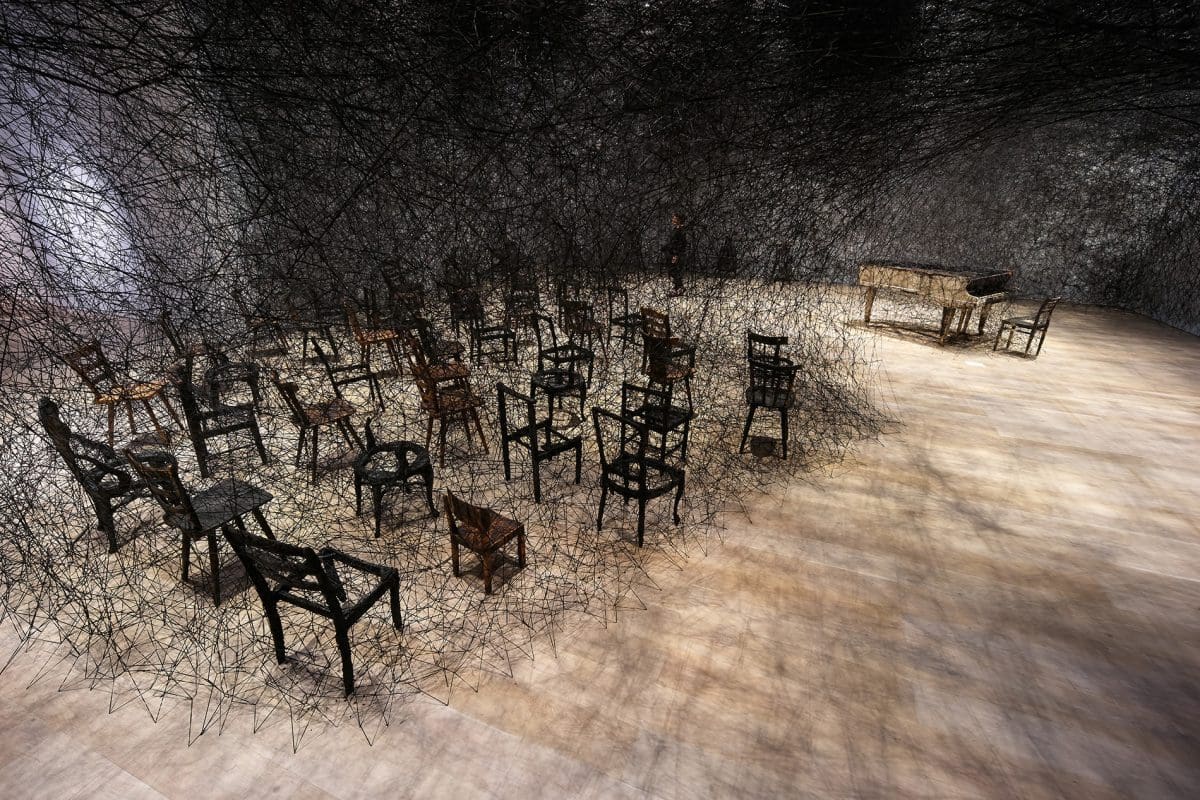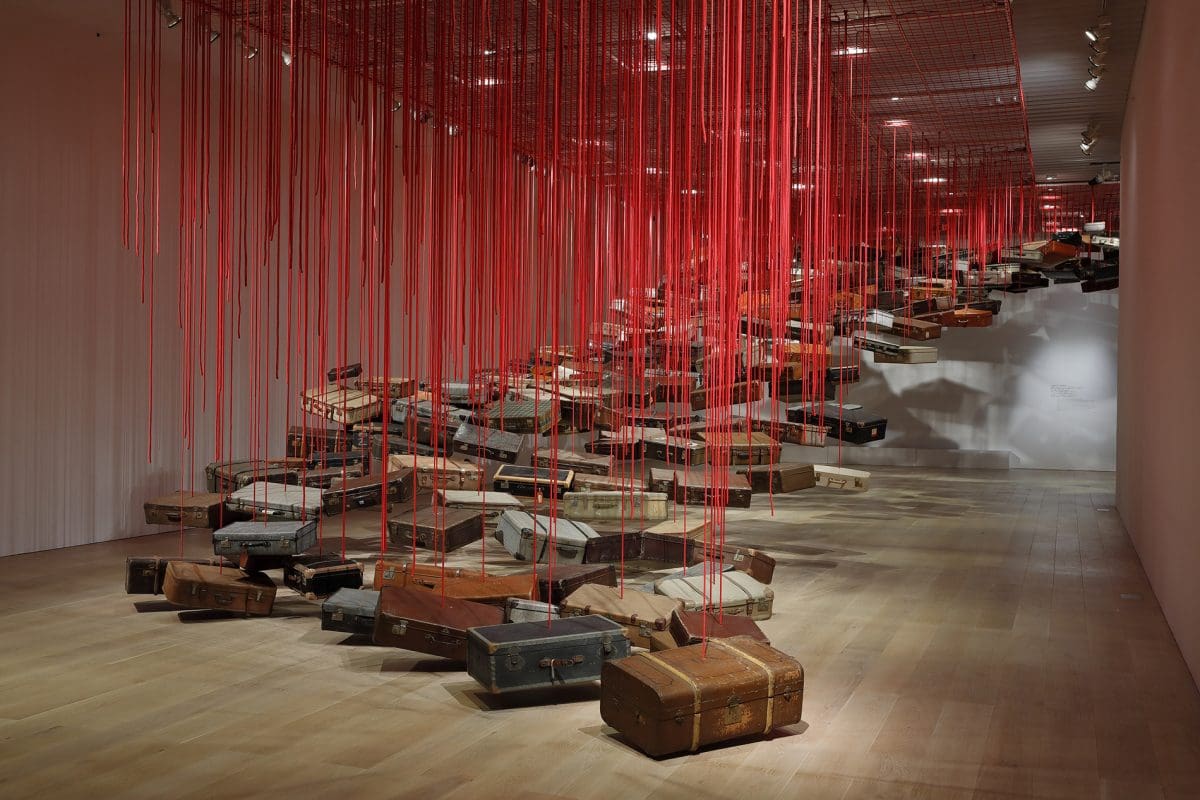
Cartographies of the heart
Five Acts of Love, a new exhibition at ACCA, maps the space in which memory, intimacy and resistance intersect.

Chiharu Shiota, Japan b.1972, Where Are We Going?, 2017/2019, White wool, wire, rope. Dimensions variable Courtesy: Galerie Templon, Paris/Brussels Installation view: Shiota Chiharu: The Soul Trembles, Mori Art Museum, Tokyo, 2019 Photo: Kioku Keizo Photo courtesy: Mori Art Museum, Tokyo.

Chiharu Shiota, Japan b.1972, Uncertain Journey, 2016/2019, Metal frame, red wool. Dimensions variable Courtesy: Blain | Southern, London/Berlin/New York Installation view: Shiota Chiharu: The Soul Trembles, Mori Art Museum, Tokyo, 2019 Photo: Sunhi Mang Photo courtesy: Mori Art Museum, Tokyo.

Chiharu Shiota, Japan b.1972, Uncertain Journey, 2016/2019, Metal frame, red wool. Dimensions variable Courtesy: Blain | Southern, London/Berlin/New York Installation view: Shiota Chiharu: The Soul Trembles, Mori Art Museum, Tokyo, 2019 Photo: Sunhi Mang Photo courtesy: Mori Art Museum, Tokyo.

Chiharu Shiota, Japan b.1972, In Silence, 2002/2019 Burnt piano, burnt chair, Alcantara black thread Dimensions variable Production support: Alcantara S.p.A. Courtesy: Kenji Taki Gallery, Nagoya/Tokyo Installation view: Shiota Chiharu: The Soul Trembles, Mori Art Museum, Tokyo, 2019 Photo: Sunhi Mang Photo courtesy: Mori Art Museum, Tokyo.

Chiharu Shiota, Japan b.1972, Accumulation – Searching for the Destination, 2014/2019, Suitcase, motor and red rope. Dimensions variable Courtesy: Galerie Templon, Paris/Brussels Installation view: Shiota Chiharu: The Soul Trembles, Mori Art Museum, Tokyo, 2019 Photo: Kioku Keizo Photo courtesy: Mori Art Museum, Tokyo.
Chiharu Shiota’s exquisite, renowned artworks trace life and death, the intangible aspects of human existence, and the way we remember and dream. Known for her evocative large-scale installations created from thousands of delicate red and black threads, her largest survey to date is now showing.
Spanning more than 100 works and organised by Tokyo’s Mori Art Museum, the exhibition features many of Shiota’s large-scale immersive installations, interspersed with what Gallery of Modern Art curator Reuben Keehan describes as “more archival presentations that give a sense of the history of her practice and the real depths of the themes that she’s been exploring for some time”.
Australian audiences may already be familiar with these themes: for the 2016 Biennale of Sydney, Shiota delivered an unforgettable installation of beds suspended in black thread, drawing on the historic sandstone site of Cockatoo Island, and ensnaring the spirits of the past.
More recently, figurative forms have reappeared in Shiota’s work. “Those often take the forms of body parts like truncated arms or legs and come directly from her experience,” explains Keehan. “Even though they’re bronze, they’re so beautifully cast that they appear quite fragile.” Alongside these body-centered works will be a new never before seen installation for Brisbane, which will be acquired by the gallery.
Born in Japan, Shiota now lives in Berlin, having spent time in many places around the world (including Australia when she attended Canberra School of Art in the 1990s). While her practice has a series of recurring motifs such as boats, suitcases, journeys and migration, Keehan affirms that, “There’s no strict reading of the work. These motifs inspire it, but what the audience takes away from it is a very personal thing.”
Chiharu Shiota: The Soul Trembles
Gallery of Modern Art
18 June—3 October
This article was originally published in the July/August 2022 print edition of Art Guide Australia.